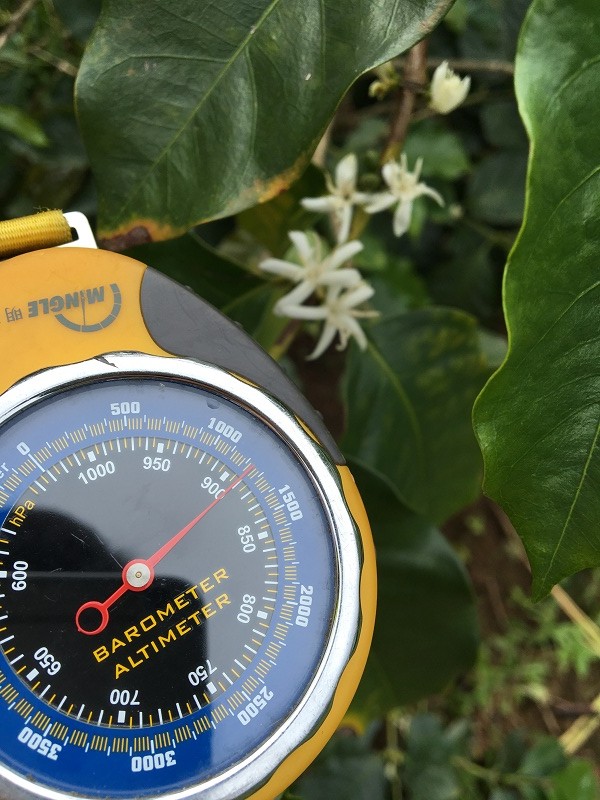Medium acidity Bolivian Coffee Manor area introduces the characteristics of Bolivian coffee beans in Xuemai Manor
The acidity is medium and low, but the feeling is not monotonous, but calm and generous, soft and fresh. In the sour taste, you can even feel the sour taste of citrus fruits.
The overall taste of Bolivian coffee is rich and balanced, in addition to the beautiful sour taste, there is also a shallow chocolate flavor, smooth taste is more smooth, by contrast, the bitter taste is not obvious. The aftertaste of the coffee is very good, and the sweet taste in the mouth lingers after drinking it. It is an unforgettable experience that Bolivian coffee was really commercially produced in the 1950s (at first coffee trees were only planted around the house as a fence). In a very short time, however, the coffee industry developed rapidly, thanks to the influence of the frost in Brazil in 1975. At that time, the coffee industry in Brazil was greatly affected, and the coffee industry in Bolivia took the opportunity to develop rapidly into TIGTAG Coffee, the Bolivian coffee of the world.
This is a strange country, the legal capital is Sucre, and the seat of government is La Paz. While Sucre has only the Supreme Court, La Paz is the seat of the government and parliament.
Bolivia is a landlocked country, about 1/3 of the territory is the Andes, rugged terrain, high altitude. La Paz is known as the capital with the highest elevation in the world. Although there is no beautiful tropical seaside scenery, the lake scenery and the unique scenery of the Andes are also extremely nostalgic, and the Uyuni Salt Lake, known as the Mirror of the Sky, is a wonder of the world. Without a developed economy, this is one of the poorest countries in South America. But the people here are quite optimistic and open, and it is true that different people have different pleasures of life. The main problem facing coffee producers is to strive to maintain stable quality. The coffee here is generally well-balanced and refreshing, with a unique aroma.
Ecuador is one of the few countries in South America that produces both Arabica coffee and Robbins coffee. However, as the land suitable for Arabica coffee trees is decreasing, the production of Robbins coffee is gradually increasing. The best Arabica coffee comes from the Andes, especially the Chanchagu Valley (Chanchamgo Valley), which divides into two series of mountains, extending from south to north to the Arabian coffee tree in central Ecuador, which was first introduced to Ecuador (Ecuador) in 1952. Ecuadorian coffee beans can be divided into two varieties: Galapagos and Gigante, both of which have the characteristics of large granules and heavy weight. Ecuadorian coffee can be divided into first class according to quality (No. 1) and Extra Superior. They are mainly exported to the Nordic countries of Scandinavia. In the past, Bolivian coffee trees used to serve as hedges and ornaments around the garden. Real commercial production began in the early 1950s. The coffee industry in Brazil was badly damaged by the great frost in 1957, while Bolivia (Bolivia) benefited and developed rapidly. Bolivian coffee is grown at an altitude of 180,670 meters above sea level, and the Arabic washed coffee beans are exported to Germany and Sweden. They are not the best in taste today and have a bitter taste.

Important Notice :
前街咖啡 FrontStreet Coffee has moved to new addredd:
FrontStreet Coffee Address: 315,Donghua East Road,GuangZhou
Tel:020 38364473
- Prev

Introduction to Arusha Coffee Manor Tanzania Coffee producing area
The northern coffee is full of aroma, bright acidity, mellow taste, and thanks to the rich volcanic soil, it has the sweetness of mineral water. Southern coffees are characteristically medium body and fine acidity with good fruity and floral aromatic
- Next

High altitude Yunnan Arabica coffee beans Huaguoshan Arabica washed old varieties iron pickup fine raw beans
Arabica coffee is suitable for growing in the mountains of 800~1800 meters above sea level. If the altitude is too high, it tastes sour, and if it is too low, it tastes bitter. Arabica coffee is mostly planted in dry and hot valleys at an altitude of about 1100 meters, so the acidity is moderate, the aroma is rich and mellow. Many areas of Yunnan Province have unique environments suitable for the growth of Arabica coffee, and the Arabica coffee produced is of excellent quality. The planting area is mainly distributed in the temporary
Related
- Does Rose Summer choose Blue, Green or Red? Detailed explanation of Rose Summer Coffee plots and Classification in Panamanian Jade Manor
- What is the difference between the origin, producing area, processing plant, cooperative and manor of coffee beans?
- How fine does the espresso powder fit? how to grind the espresso?
- Sca coffee roasting degree color card coffee roasting degree 8 roasting color values what do you mean?
- The practice of lattes: how to make lattes at home
- Introduction to Indonesian Fine Coffee beans-- Java Coffee producing area of Indonesian Arabica Coffee
- How much will the flavor of light and medium roasted rose summer be expressed? What baking level is rose summer suitable for?
- Introduction to the characteristics of washing, sun-drying or wet-planing coffee commonly used in Mantenin, Indonesia
- Price characteristics of Arabica Coffee Bean Starbucks introduction to Manning Coffee Bean Taste producing area Variety Manor
- What is the authentic Yega flavor? What are the flavor characteristics of the really excellent Yejasuffi coffee beans?

